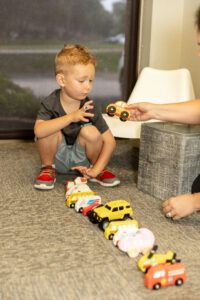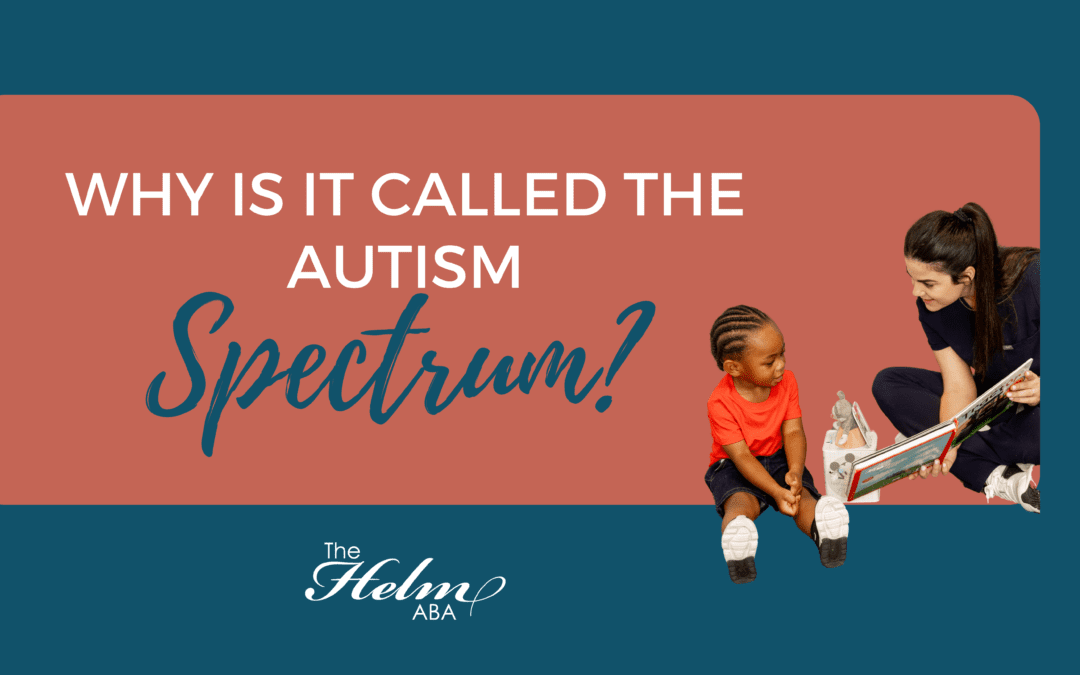Have you ever wondered why autism is called a “spectrum”? The word “spectrum” means a range, like a rainbow with different colors blending together. When people talk about autism as a spectrum, they mean that autism can look very different from one person to another. Just like colors on a rainbow, no two people with autism are exactly the same.
Let’s talk about why it’s called the autism spectrum, what that means, and how doctors can diagnose autism when everyone’s experience with it is different.
What Does “Spectrum” Mean in Autism?
When we say autism is a spectrum, we mean that people with autism can have a wide range of abilities, challenges, and needs. Some people with autism may need a lot of help in daily life, while others might not need as much. Some might be very social, while others prefer to be alone. The spectrum idea helps us understand that everyone with autism is unique, even though they have things in common.
How Autism Can Look Different in Different People
Here are some ways that autism can vary across the spectrum:
- Communication Skills: Some people with autism don’t speak and may use other ways to communicate, like sign language,
 pictures, or special devices. Others talk a lot but might find it hard to understand jokes or read facial expressions.
pictures, or special devices. Others talk a lot but might find it hard to understand jokes or read facial expressions. - Social Interaction: People with autism often have different ways of connecting with others. Some may love being around people but struggle with reading social cues, while others might prefer doing things alone or feel nervous in groups.
- Sensory Sensitivities: Many people with autism experience the world through their senses in unique ways. Some are sensitive to bright lights, loud sounds, or certain textures, while others might enjoy sensory activities, like touching different textures or swinging.
- Repetitive Behaviors and Strong Interests: Some people with autism have specific routines they follow every day or have intense interests in topics like trains, animals, or video games. These routines and interests are comforting and bring them joy.
- Levels of Support: Some people need daily help with tasks, like brushing teeth or getting dressed, while others live independently. Autism being a spectrum means everyone needs different kinds of support.
How Do Doctors Diagnose Autism When It Looks Different in Different People?
Since autism can look so different, doctors use a checklist of behaviors to help diagnose it. They look at how a child or person communicates, behaves, and interacts with others. A diagnosis usually involves several steps:
- Screening: Doctors often start by asking parents questions about their child’s development. This might happen during regular check-ups when a child is very young. If the doctor notices signs of autism, they might suggest further evaluation.
- Developmental Evaluation: This is a deeper look at the child’s behavior, communication, and social skills. Doctors, psychologists, or other specialists might observe the child and talk with the family to understand what the child finds easy or difficult.
- Team of Specialists: Because autism can affect people in different ways, a team of experts like speech therapists, psychologists, and occupational therapists may help with the diagnosis. Each specialist looks at the child’s abilities and needs from a different perspective.
Doctors use the idea of a spectrum to understand that autism doesn’t have just one “look.” They check for certain behaviors or differences, but they know these can show up in many ways.
Why Knowing About the Spectrum Helps Us Understand Autism
Understanding autism as a spectrum helps us see that there isn’t one “right” way to have autism. It reminds us that everyone is unique and has their own strengths and challenges. Knowing about the spectrum also helps families, teachers, and friends support people with autism in the way that works best for them.
How the Spectrum Approach Helps Families and Teachers
For families and teachers, knowing about the autism spectrum makes it easier to see each person with autism as an individual. They can focus on what each person needs to succeed instead of assuming everyone with autism is the same. This understanding helps everyone be more patient and supportive, so kids with autism can feel comfortable and included.
Conclusion: Embracing the Spectrum
The word “spectrum” helps us remember that people with autism are each unique, with different strengths and challenges. By understanding autism as a spectrum, we can better support people with autism, celebrate their differences, and create a more welcoming and inclusive community.

